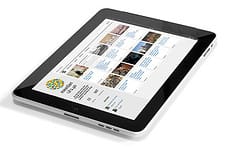
Textbooks won't go extinct anytime soon.
Photo by meedanphotos
Last week, Apple launched two programs for the iPad that it hopes will transform the textbook industry in the same way the iPod transformed the music industry. The first, iBooks 2, will make media-rich electronic textbooks available for purchase on the iPad at a fraction of the cost of a hard-copy text. (Currently, all titles are available for $14.99 or less.) The second, iBooks Author, allows anyone to create textbooks for free using an iMac, and to publish them to iBooks immediately.
There were many skeptics who, when the iPod was launched a decade ago, believed it would have only a negligible impact on the way people listened to music. Helping those folks eat their words has become something of a cottage industry on the web. Just yesterday, tech blogger and Apple enthusiast John Gruber gleefully documented all of the people who underestimated the appeal of the iPhone and iPad and contrasted them with Apple’s just-announced record-breaking sales for both products.
And so, I’m loathe to doubt the transformative power of the iPad in the world of education. After all, if anyone can transform the textbook industry, it’s Apple. As someone who spent many years writing instructional materials for schools and trying to find my way around the many deficiencies of the current crop of textbooks, I welcome the creative destruction it would bring.
But, even for a company as successful as Apple, the path forward is a challenging one, and it’s likely to be a while before students across all grades and schools come to class with iPads instead of textbooks in their backpacks.
For starters, iPads are—at least for now—prohibitively expensive for too many students ($499 to $829). Universal adoption would require a prohibitively large up-front expense. And, if schools were to somehow find room in their budgets to provide iPads to all students, it would be very tempting to do so in a tightly controlled way. It’s unlikely that they would let them take them home, both for security reasons and because it’s far too easy for children to damage iPads, no matter how careful they try to be.
Which brings us to our next challenge: iPads aren’t as nearly durable as textbooks. In fact, they don’t even come close. Perhaps anticipating this criticism, Phil Schiller, Apple’s SVP of Worldwide Marketing, decided a good offense was a great defense and made the case that an iPad is better than a paper textbook because “It’s portable, durable, interactive, searchable, current and capable of containing even richer content.”
You lost me at “durable,” Phil. It’s one giant piece of glass. Some enthusiasts practically cradle them like babies when carrying them from room to room.
You lost me at “durable,” Phil. It’s one giant piece of glass.
Old-fashioned textbooks, by contrast, need little more than a paper bag cover to protect them—and can sustain the daily wear and tear they are sure to get. What will happen when, two months into the school year, a third of all elementary students need new iPads? Certainly parents aren’t going to absorb that cost. But how can schools? In such a scenario, what would a teacher do to ensure learning time wasn’t lost to technology glitches?
Even more importantly, though, in order for iPads to replace traditional textbooks and resources, teachers need to integrate them into their approach to lesson-planning. But low-tech options—blackboards, handouts, textbooks, etc.—are easy to integrate into daily lessons. Over time, would iBooks really become the go-to resource or will they be relegated to (expensive) niche lessons for particular classes and schools?
I’m sure that, when the personal computer was created, people envisioned a day when notebooks and paper would go the way of the dinosaur and would be replaced by a PC on every desk. It never panned out. It seems unlikely that we will have an Apple on every desk any time soon.
